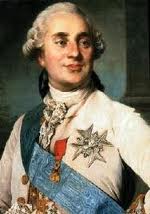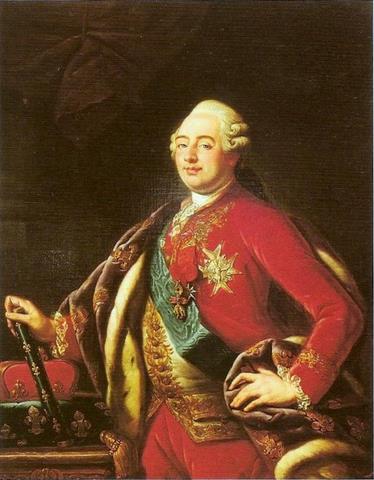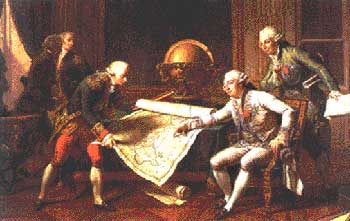
With the Diamond Necklace Affair the French queen’s popularity quickly fell to its lowest point while she became more mature and tempered as she got older. Soon the queen bore the king an heir and three more children followed.
As it was befitting, the queen began spending more time with her family and less enjoying the nightlife in Paris.
Unfortunately it was too late. The French queen's personal life settle down, but France was in an uproar. The country's harvests had been disastrous and people stared. At the same time the state staggered with the debts inherited from the time of Louis XV and which Louis XVI could not pay.
Marie Antoinette's past haunted her and the people had the opinion she insensitive to their troubles. Somehow the (founded or unfounded) rumor that she had said "let them eat cake" when she had heard about of the widespread famine. At this time the fake Viennese cottage was remembered and jokes were made. To improve her faltering popularity several portraits were painted of the French queen surrounded by her children so the public would view her as a loving mother, but once a reputation is tarnished, there's not much that will help.

The King, desperate at this point, called the Estates General in May 1789, it was the first time in 175 years it had been called, as Louis had been incapable of forcing the courtiers and nobles to make the financial reforms considered necessary. It was the first of its kind, as it gave representation to common men, as one of the three estates able to vote. But it was to no avail. Louis XVI had planned a rather limited role for the commoners and it doesn't come as a surprise that they were not content to be so constrained.
The violence escalated quickly and in June the National Assembly began to demand more rights - clearly the French royal family had lost their people's respect, it was the combination of the king's ineffectiveness and the French queen's unpopularity. In July, Paris populous riots broke out in Paris and on 14 July the enraged people stormed and took over La Bastille.
As it happens, Louis-Charles, Marie Antoinette's oldest son and heir to the crown had very recently died and his mother was sick with grief.
With the crisis the shortage of food did not lessen and the violence grew continuously. On 4th October an enraged mob broke into the Versailles palace. The French Royal family was forced to move into Paris and took residence in the Tuileries Palace so they could be at hand in case of nee and be monitored.
By 1791, it seemed that the revolutionary movement had calmed down. At that time many members of the nobility had fled the country and the royal family was planning to do the same.
A friend of the French Queen -and alleged lover- Axel Fersen, arranged for Marie Antoinette to escape with her family. The French royal family climbed on an anonymous carriage...but they were caught 24 hours later, and only a few miles away from the country's frontiers in Varennes. They were taken back to Paris within a week. After the failed attempt to escape, Marie Antoinette began seeking help from abroad. Remember she was daughter of the Austrian empress? Austria and Prussia threatened France...but this did no more than provoke and inflate the rage of the people.
The mobs were inflamed and on On 10th Au guest 1792 they stormed the Tuileries palace. Of course the palace was sacked, and what little was left was destroyed. The French royal family was imprisoned in the Temple fortress and it resulted in 900 Swiss guards killed.
Other nobles and aristocrats were imprisoned too and what we know today as the Reign of Terror began.

As the fortunes of the French armies waned, the anger surged and in September 1792 thousands of nobles were murdered in the prisons.
Madame Lamballe was perhaps the most notorious victim who was a close friend of Marie Antoinette. Lamballe was taken to a trial, but when she refused to swear an oath against her friend, the mob hacked her to pieces, and those pieces were paraded outside the Temple fortress for Marie Antoinette to see.
In December, King Louis XVI was tried for treason, convicted and condemned to be guillotine. He was executed in January 1793. During the following 10 months the French queen lived isolated in her prison, her children had been taken away from her and she had no idea what had become of them or whether they still lived. Marie Antoinette lost weight and her eyesight began to fail.
On 14th October she was brought before the Revolutionary Tribunal where they proceeded to attack her more as a person than as a queen. Like the king, Marie Antoinette was found guilty of treason and she was put to death on 16th October 1793.
Many who saw her that day were shocked by the aged, ragged appearance of the 38 year old woman. Her execution was quick and her body left on the grass The execution of Marie Antoinette was over quickly and her body was later dumped in an anonymous grave.